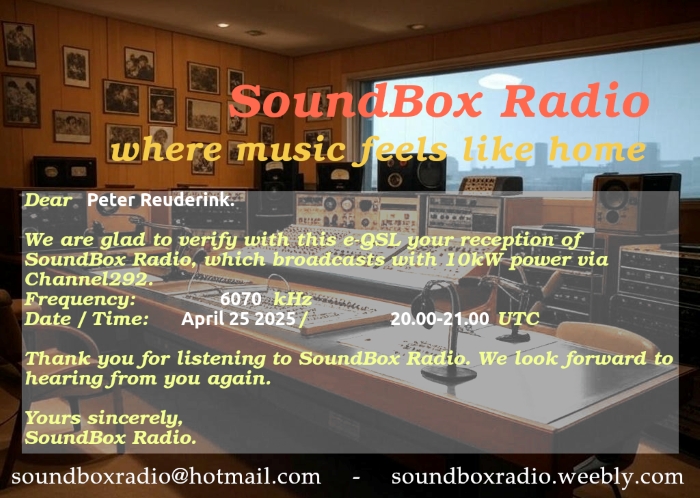
A program I hadn’t heard before on Channel 292, Germany is SoundBox Radio. On Friday night they broadcast a nice mix of Disco music on 6070 kHz. My reception report was awarded with an e-QSL and a friendly email in a day.
"It's not true I had nothing on, I had the radio on" - Marilyn Monroe

A program I hadn’t heard before on Channel 292, Germany is SoundBox Radio. On Friday night they broadcast a nice mix of Disco music on 6070 kHz. My reception report was awarded with an e-QSL and a friendly email in a day.
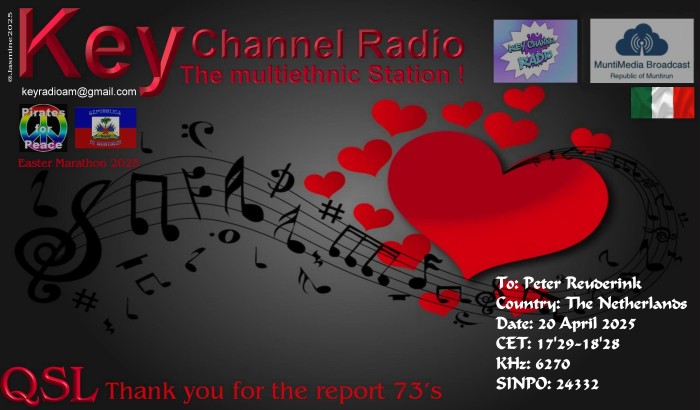
Last weekend Key Channel Radio, broadcasting from Emilia Romagna, Italy, was on air on 6270 kHz. Massimo, who operates the station was so kind to give me a heads up warning. Reception wasn’t easy as propagation conditions were poor and there was quite a bit of noise/interference which required them to change frequency a few times.
Massimo sent me the beautiful e QSL, a friendly email and some photo’s of the stunning scenery in Emilia Romagna:
Dear Peter, thanks for your valuable listening report. In the end you listened to us too. Tough evening, stanag, CW all active. Yes we changed the frequency 4 times.
KCR has been broadcasting since January 2016 from a location on the hills of the Emilian Apennines.
We use a commercial transmitter with a maximum power of 400 W (in use 250 W) and a self-built Morgain 48/88 Antenna.
There are three of us who manage it, I take care of the technical part, programs.
My girlfriend takes care of important statistics on listeners and small studies on propagation. A dear friend of ours takes care of the graphics, the promos and QSLs are her creations.
We are an open radio, we have collaborated with several German Pirate Radios, Doctor Tim, Radio BZN and more. Now we collaborate with Radio Monique, Bart even made a broadcast and several Jingles for us. (Pirate for Peace Member).
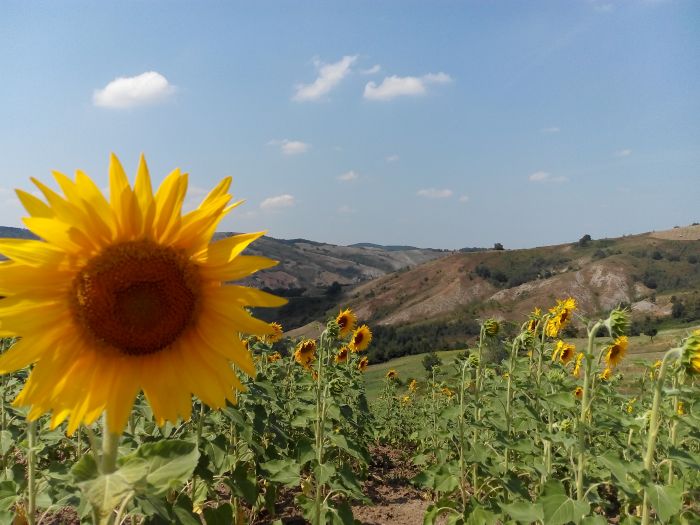
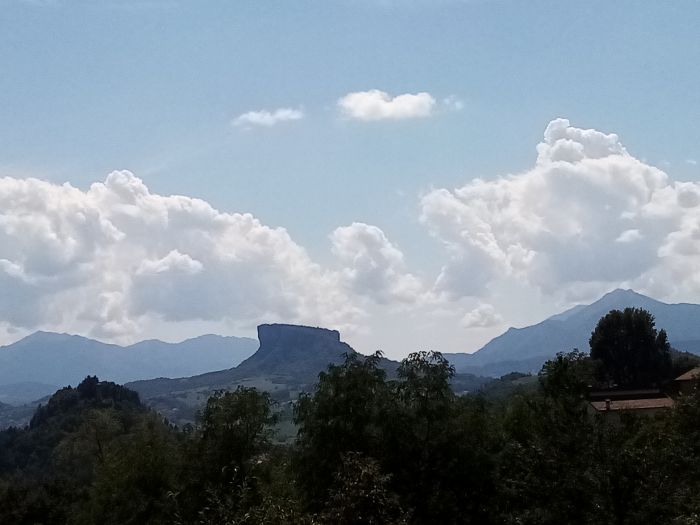
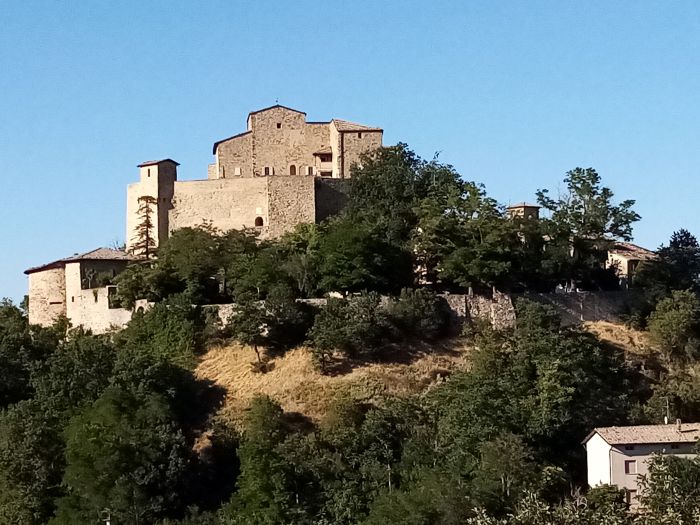
.
A few times per year the International Space Station (ISS) has an event in which they transmit SSTV messages in the amateur band. Between April 11th and 16th there was such an event, dedicated to “Humans in Space”. Note that April 12th, 1961 was the date of the first human space flight with Yuri Gagarin.
The frequency used was 145.800 MHz in the 2 meter amateur band, which is covered by my ICOM R8600 so I decided to give it a try. I used the AMSAT site to get information when the ISS was flying over. Each morning there were 5 passes, about 1.5 hr apart. During a pass the ISS would “theoretically” be in visible range for 6 to 10 minutes. As I didn’t have a 2 meter band antenna I just pointed my 5 elements 100 MHz Yagi (6 m elevation) westward to see what would happen.
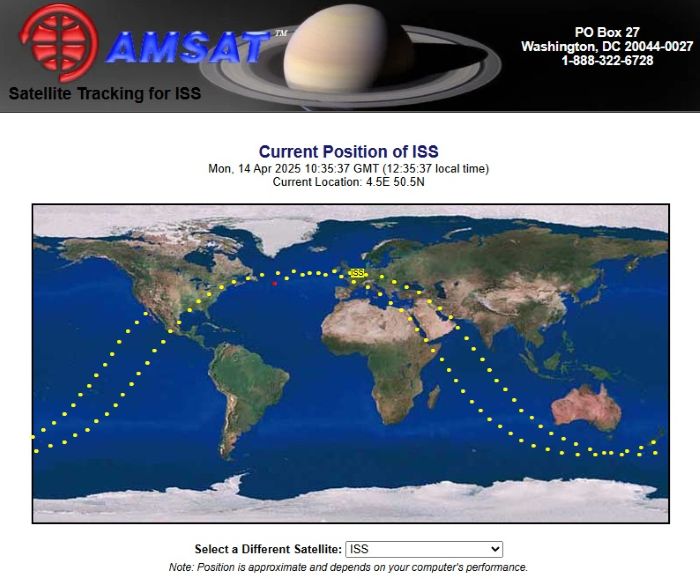
On the first try I was lucky. The SSTV broadcasts were in FM and PD120 mode, which took me some time to sort out. Good thing that I made an SDR recording so I could leisurely experiment with fine tuning the decoding. Now each picture takes 2 minutes to send, followed by a pause of 2 minutes. And while the ISS is “theoretically” in sight for 6 to 10 minutes, the reality is that at my location I don’t have a free view from west to east. On the west there are houses and somewhat further away a 9 story apartment tower. But east is worse with a nearby 5 story apartment blocking my view. Combined with the directional properties of the antenna it meant that I never managed to have more than 2 minutes of good quality reception each pass. As you can see in the pictures below:
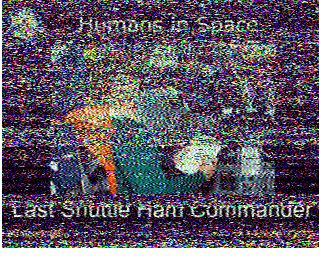
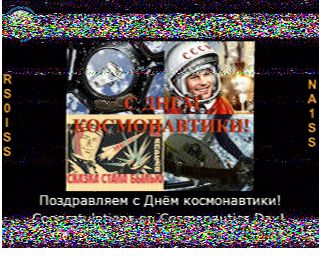
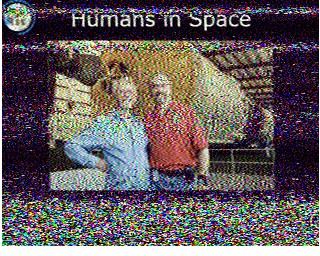
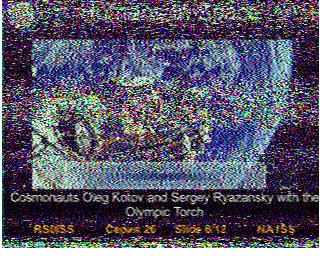
But good enough to upload my pictures to the ARISS website and apply for an award which was almost immediately returned (Tip: do check you spam email box, as that’s where my copy landed!).
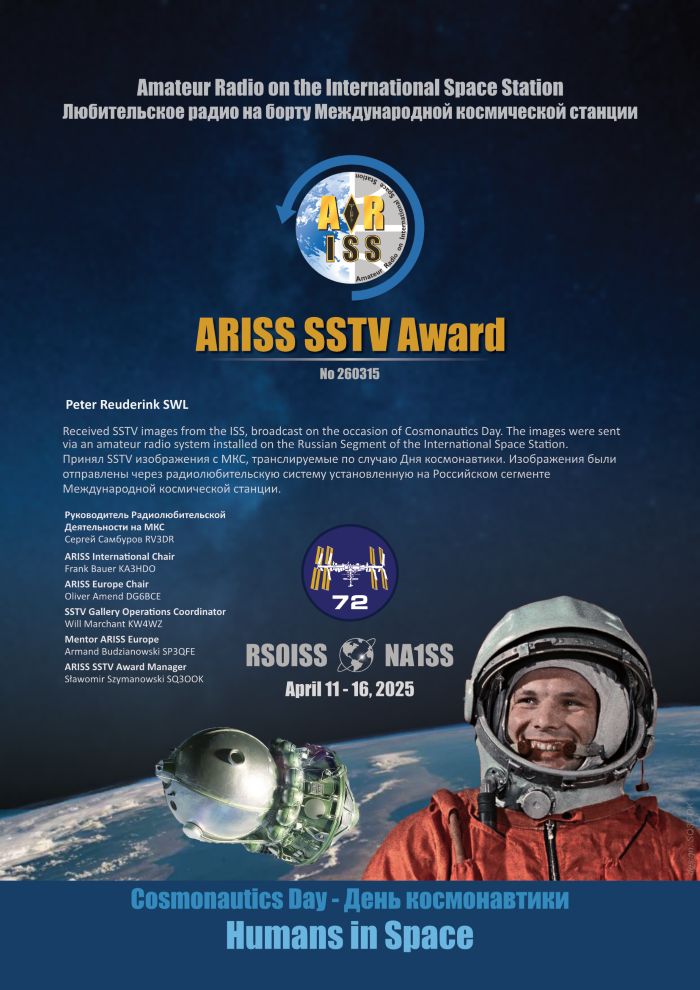
Now the problem is that I don’t have a reliable source for upcoming ISS events. The ARISS website doesn’t always seem to mention them. I got my information form the AMSAT-UK website, which had links to various relevant pages. So suggest you follow them if you are interested to try for yourself.
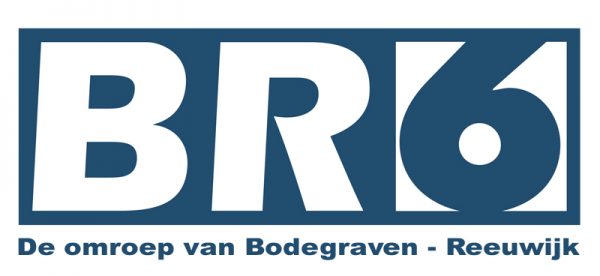
Another nice QSL from a local radio station in The Netherlands. This time from BR6, the local station for Bodegraven & Reeuwijk. John Bekker was so kind to confirm my reception report. He wrote that they have no QSLs, but in thThey have been heard as far as Wolfsburg, Germany, which isn’t bad given their power of only 50 Watts.
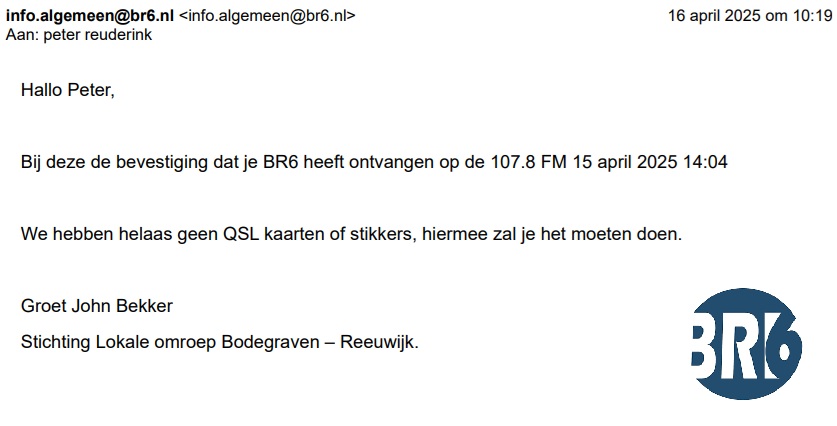
BR6 is also part of the RTV Midden Holland group (see my post on RTV Krimpenerwaard). Their antenna is located on an advertising column in an industrial park in the south of Bodegraven. Just over 10 kms from my QTH!
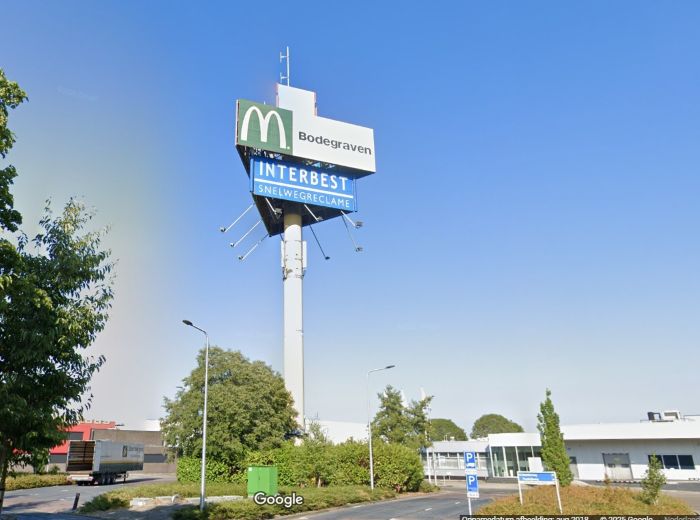
By the way… did you know that Bodegraven, like my own QTH Woerden is situated along the old river Rhine? Which was once the northern frontier, the “Limes” of the Roman Empire…
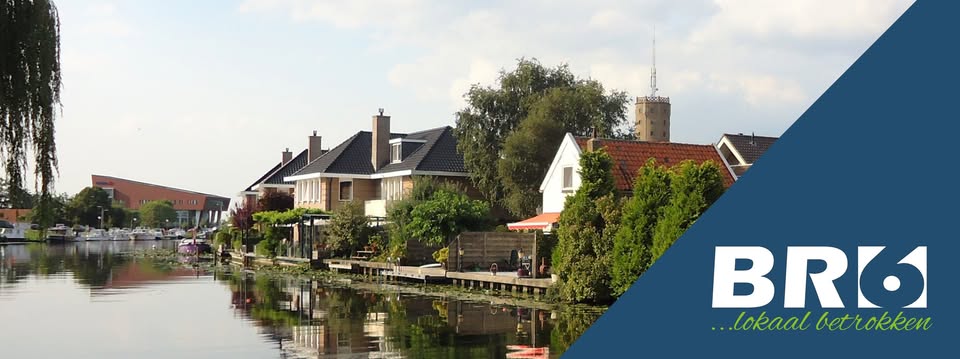
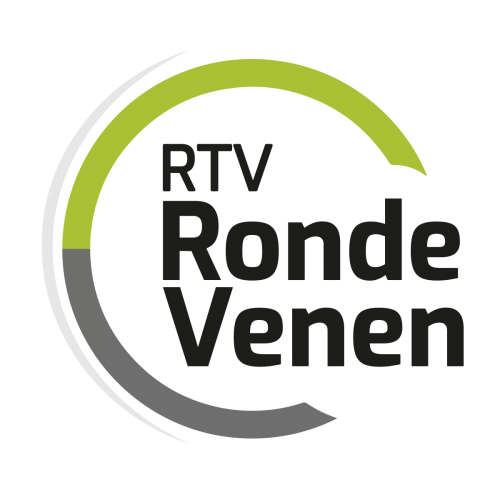
Back on my journey exploring the local FM radio scene:
Another nearby local FM station is RTV Ronde Venen. They have two frequencies in use. I listened to their 60 Watt transmitter from Kockengen on 106 MHz (8 kilometers from my QTH). The other frequency is 105.6 MHz from Mijdrecht with 50 Watts. My report was confirmed within a day with a f/d email reply.
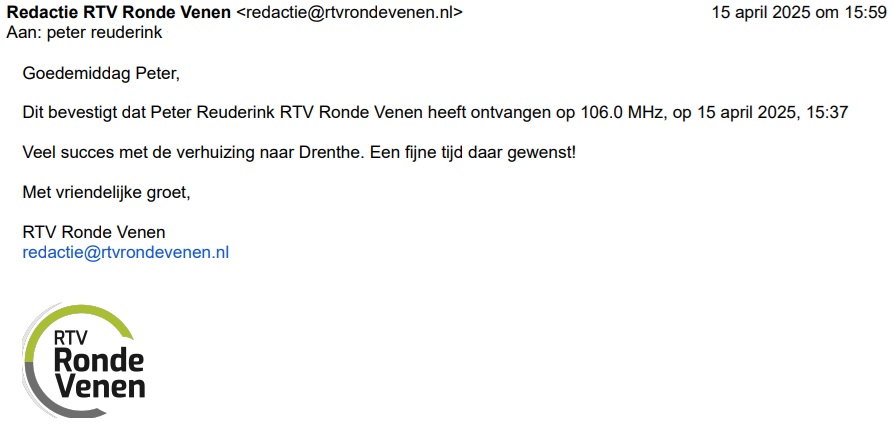
I heard and QSL-ed this station with a similar name “Radio Ronde Venen” in 1990 (no TV then apparently). This was the local radio from Mijdrecht, in the municipality Ronde Venen which was established when Mijdrecht, Vinkeveen, Wilnis and Waverveen merged into one muncipality in 1989.
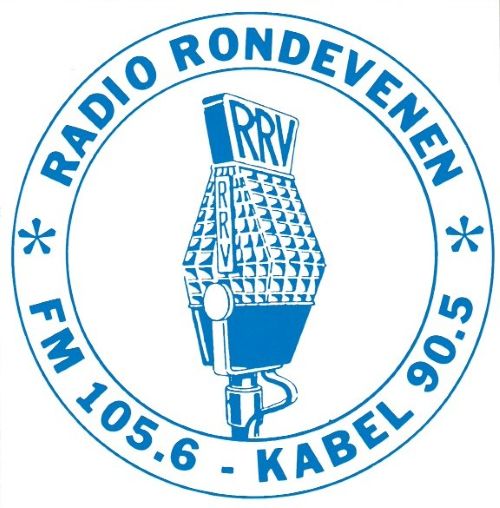
Kockengen however is part of the the municipality Stichtse Vecht. With RTV Stichtse Vecht they were broadcasting on 106 MHz from Kockengen and 105.3 MHz from Maarssen. But since the start of 2025 they decided to join efforts with RTV Ronde Venen. Financial considerations with regards to investments in the studio apparently played a role. As I described in my post on RTV Krimpenerwaard it is another example of the trend in which local stations merge into more regional entities… Not sure what happened to 105.3 MHz though, that transmitter seems to be taken off the air.

Best kept secret in The Netherlands is the beautiful Alblasserwaard. Even on public holidays the roads are quiet, perfect for cycling through a classic Dutch Polder scenery…
I heard Klokradio the local FM station in the Alblasserwaard on 107 MHz with 200 Watts from the village of Molenaarsgraaf. The distance is only 24 kilometers, but reception was a bit compromised with RPL FM from my home QTH on the adjacent 107.1 MHz.
Kees from the Technical Department (who is a HAM operator) was so kind to send me a detailed confirmation email:
Dear Peter,
We hereby confirm your receipt on April 10, 2025, 5:34 PM from Klokradio on 107.0 MHz.
Thank you for your message. It is always nice for us to hear where we can be received.
Klokradio is the local broadcaster of Alblasserdam and Molenlanden in the Alblasserwaard. We started our broadcasts on December 15, 1990 and have existed for 35 years this year.
Because we have a large broadcasting area, we now use three transmitters/antennas.
One antenna is on a flat in Alblasserdam (97.3 MHz) and the other two in Molenaarsgraaf (107.0 and 92.1 MHz).
Attached is a photo of the mast in Molenaarsgraaf. The two horizontally stacked antennas at the top left are for 107 MHz, the yagi opposite for 92.1 MHz. The lower yagi is a receiving antenna for 97.3 MHz, which receives the signal from Alblasserdam and transmits it again on the other two frequencies. In this way we do not have delays when switching between the three frequencies (via RDS in the car). A bit complicated, but that is the disadvantage of a large, elongated service area.
In addition, some pictures that you might like.
We transmit 24 hours a day, but because we work with volunteers, a large part of that time is filled by “the computer”. The broadcast that you heard was one of our live presented programs.
Of course I looked at your website; nice to read what equipment you (have) used.
Thanks again and good luck with the hobby, 73’s.
Kind regards,
Kees (PE1NAC)
Klokradio Techniek
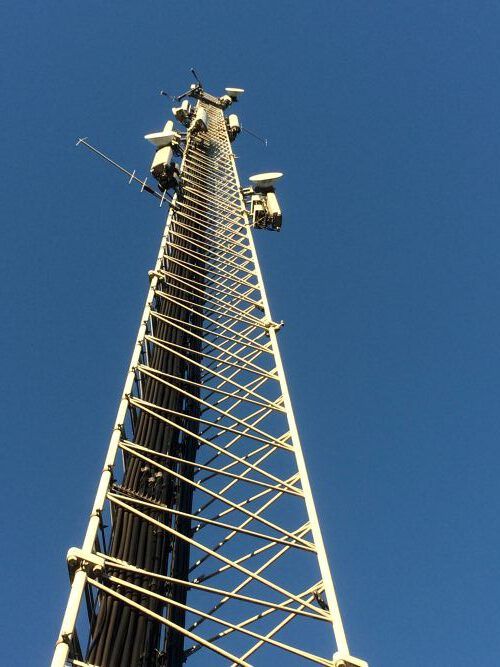
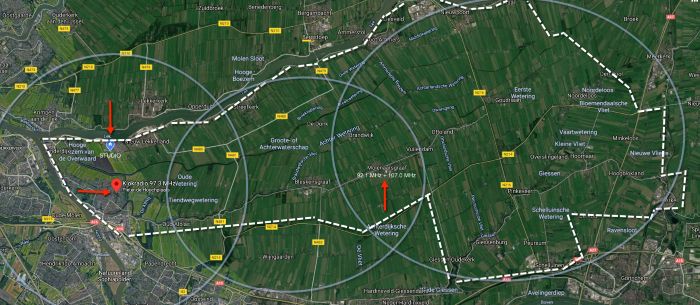
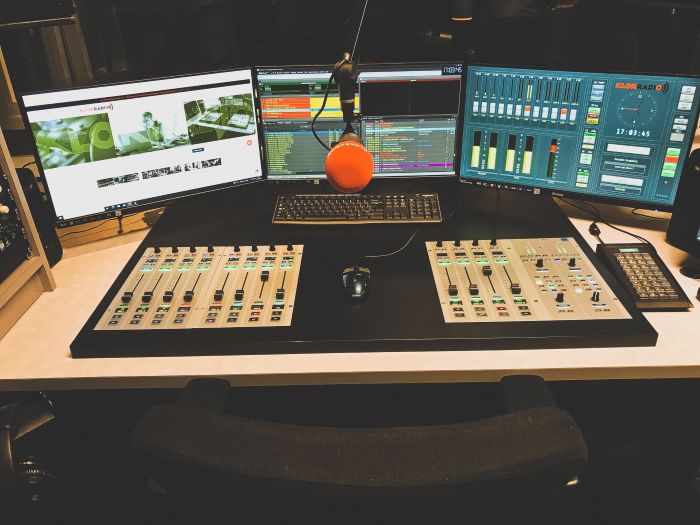
Dear DX friends I got this tip for a broadcast from Key Channel Radio. This station has been on the air before. I have a source telling me that this one will come from St. Kitts and Nevis😁 … No matter what it is a nice DX goal!
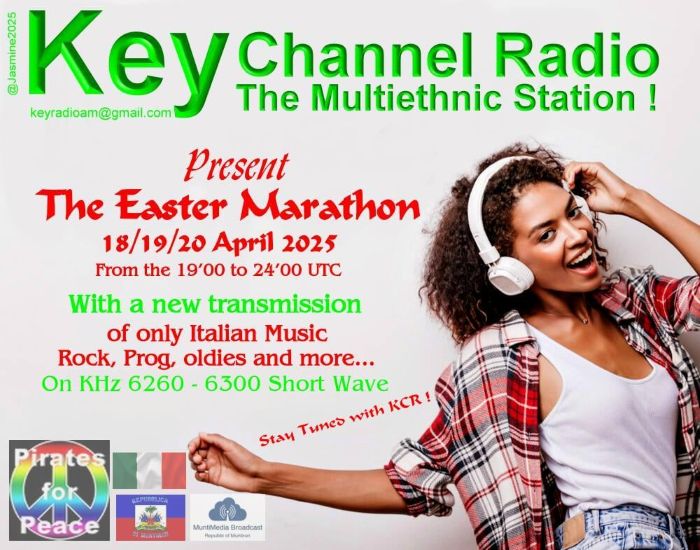
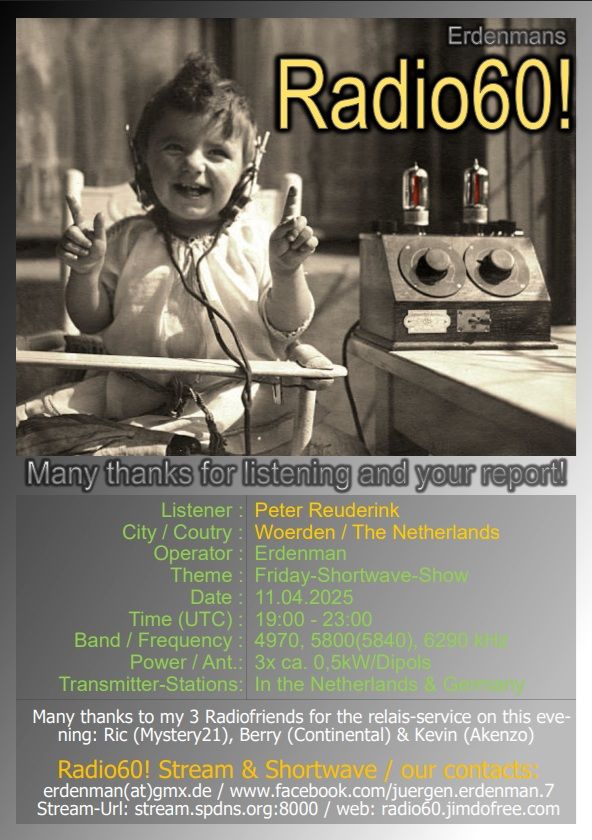
Last weekend I received Radio60! in good quality on 5840 kHz. Most likely via the transmitter of the Dutch free radio station Contikenzo.
The program was presented by Jürgen who is known as Erden Man in the Free Radio world. He sent me this beautifully designed e-QSL via erdeman(at)gmx.de . Thank you Jürgen!
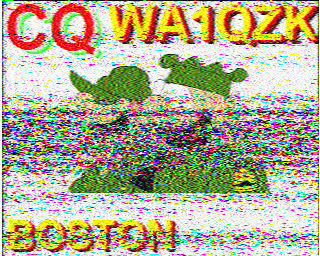

I’m not so much into HAM radio. Not that I have anything against HAMs – on the contrary – but there is already so much to listen to that I decided not to go there yet. If I’m going to do HAM I want to be able to transmit myself.
That said, I’ve found SSTV always attractive. And particularly when MF conditions aren’t great I don’t mind “sacrificing” one of my DSC receivers scanning 14230 kHz (or another HF SSTV channel). This way I picked up WA1QZK from Boston.
Intercontinental DX is always nice. Problem is that as an SWL (even when registered with VERON) you don’t always have access to email address information in a database like QRZ.com. But Ron, operator of WA1QKZ was so kind to share his email with SWLs as well, so I sent a report… and received the QSL card below. Thank you Ron!
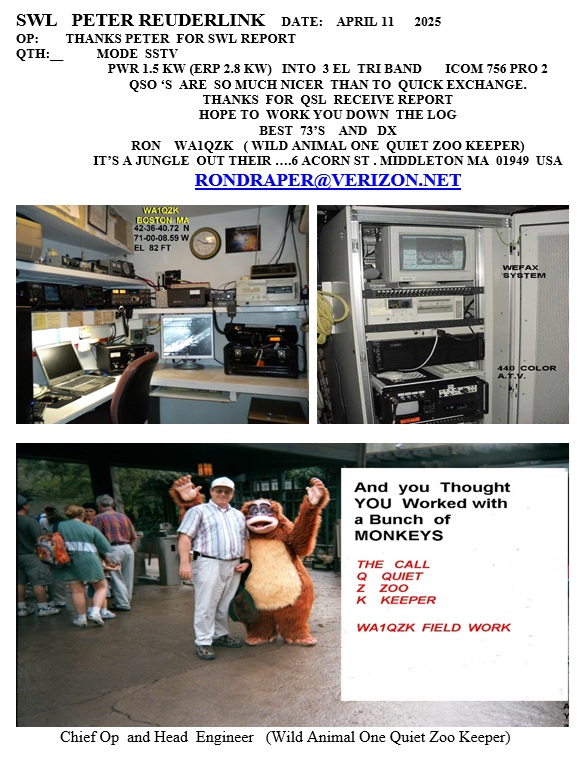
Pheww.. this one was a little bit tense… Already 5 days ago I got an email prompt (a scan of the card) indicating that my QSL from NHK had arrived in the Netherlands. That’s how the Dutch Postal Service works which is great, but apparently it still took them 5 days to deliver my card. In the mean time I was wondering if they delivered it to the wrong address.

Normally I wouldn’t have mind so such, but this was the last chance to get a traditional NHK QSL… Fortunately, today I found it in my mailbox.
I feel a little bit sad about this one, and I’m angry as well. Running a shortwave radio station requires a million dollar budget, but it also requires qualified technical personnel. So sending out a few QSLs per year to people that have a true technical interestest in your station doesn’t seem a bad idea… The “Finance Dudes” seem to have different perspective. Anyway, it is what it is… and this one goes on file. Thank you NHK for all the years that you did grant dedicated listeners a QSL!
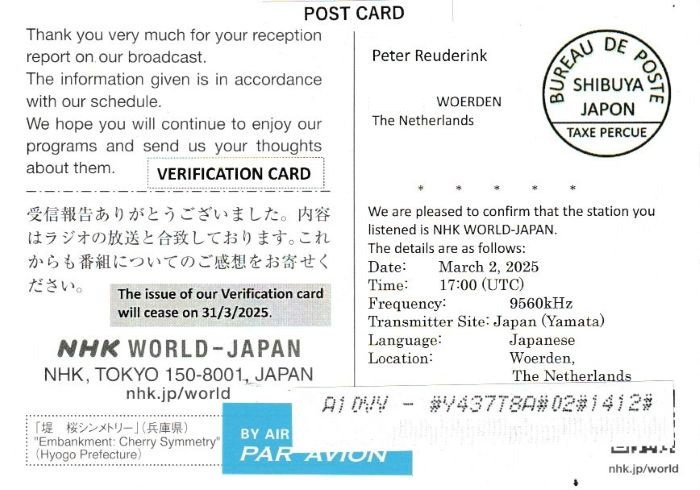
© 2025 Peter's DX Corner
Theme by Anders Noren — Up ↑